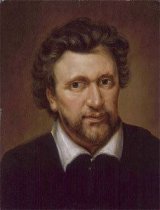Analysis of No man without money
Robert Herrick 1591 (London) – 1674 (Dean Prior)
No man such rare parts hath, that he can swim,
If favour or occasion help not him.
| Scheme | AA |
|---|---|
| Poetic Form | Couplet |
| Metre | 1111111111 111010111 |
| Closest metre | Iambic pentameter |
| Characters | 89 |
| Words | 19 |
| Sentences | 2 |
| Stanzas | 1 |
| Stanza Lengths | 2 |
| Lines Amount | 2 |
| Letters per line (avg) | 32 |
| Words per line (avg) | 9 |
| Letters per stanza (avg) | 63 |
| Words per stanza (avg) | 17 |
Font size:
Submitted on May 13, 2011
Modified on March 22, 2023
- 5 sec read
- 172 Views
Citation
Use the citation below to add this poem analysis to your bibliography:
Style:MLAChicagoAPA
"No man without money" Poetry.com. STANDS4 LLC, 2024. Web. 7 May 2024. <https://www.poetry.com/poem-analysis/31342/no-man-without-money>.


Discuss this Robert Herrick poem analysis with the community:
Report Comment
We're doing our best to make sure our content is useful, accurate and safe.
If by any chance you spot an inappropriate comment while navigating through our website please use this form to let us know, and we'll take care of it shortly.
Attachment
You need to be logged in to favorite.
Log In